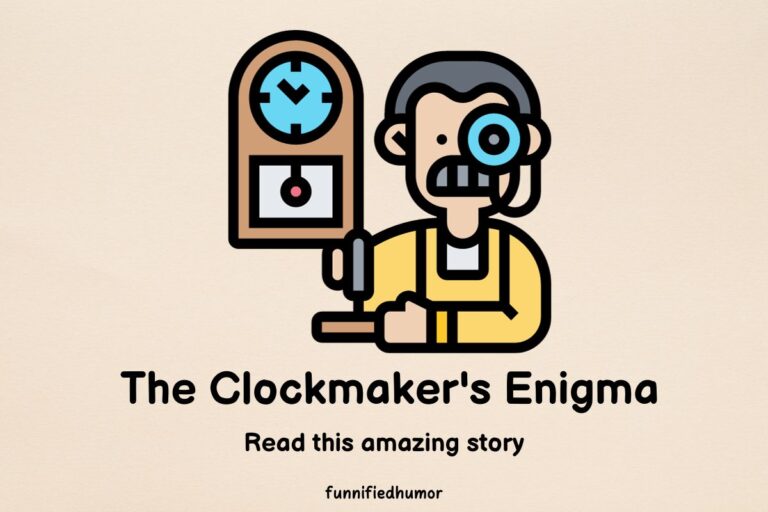The Watcher in the Window

Helen had always been a dreamer. It was what drew her to the old Victorian home nestled at the end of Maple Street, with its ornate windows and ivy-clad walls.
It felt like a place where dreams could come true or at least, a sanctuary for a lonely heart.
The house’s previous owner, a peculiar old woman named Mrs. Agatha, had a reputation in town.
People said she had a gift to see things others couldn’t. Helen, always skeptical, dismissed the stories as nothing more than small-town legends.
On her first evening there, as she unpacked her belongings, her gaze settled on a particularly beautiful window in the study. It was unlike the others, with its frame inlaid with intricate patterns and its glass shimmering, as though holding a secret. The view beyond it was mesmerizing: the town square, but not as she remembered it.
The next morning, Helen pulled up a chair and looked out. Children played, but they wore clothes reminiscent of another era. Shops displayed goods she’d never seen before. And a man, sitting on a bench, looked eerily like her late husband, Robert.
Fascinated, she opened the window and called out to the children. But her voice echoed back, and they continued playing, oblivious to her presence. Closing the window, she realized she wasn’t looking at the present but a version of it.
Days turned into weeks, and Helen found herself captivated by the scenes the window unveiled. One day, a small act by the Robert-lookalike led to a chain of events that ended in a grand parade in the town square. Another day, he missed stepping on a butterfly, and the whole day seemed to be just a touch brighter.
One afternoon, as Helen sipped her tea, Mrs. Jenkins, her next-door neighbor, dropped by. Noticing Helen’s focus on the window, she hesitated.
“That window… It belonged to Mrs. Agatha. She said it showed the world not as it is, but as it could be.”
Helen nodded. “I’ve seen things—things that are familiar yet different. But what does it mean?”
Mrs. Jenkins sighed, “It’s about choices, dear. Every little decision we make has the potential to create a ripple effect. That window shows what could happen with just a slight twist of fate.”
One evening, Helen saw a version of herself through the window. She was walking hand in hand with the Robert-lookalike, laughing and sharing an intimate moment. Tears welled up. She wondered what choice had led her to a life without him.
Days later, as Helen was engrossed in the alternate world, a knock brought her back. Opening the door, she found a young woman, around her late twenties, with a sparkle in her eyes.
“Hello,” the young woman greeted, “I’m Clara, Mrs. Agatha’s granddaughter. I heard you’ve been watching through the window.”
Helen nodded, her curiosity piqued. “Do you know about it?”
Clara smiled, “Yes. My grandma said it was a tool for learning, not yearning. It’s meant to show you the endless potential of choices. But you shouldn’t get lost in what could be; instead, learn and make the choices you wish for in the world you live in.”
Helen blinked, taking in Clara’s words. “But how?”
Clara grinned, “That’s for the next lesson. For now, take a break from that window. The real world awaits.”
As Clara left, Helen felt a renewed sense of purpose. She decided to engage more with her present, drawing inspiration from the endless possibilities she had witnessed.
Helen took Clara’s words to heart. The next day, she volunteered at the community center and joined a book club. She began to appreciate the little things, like the sound of birds or the smell of fresh flowers.
One day, while strolling through the park, she helped a child retrieve his kite from a tree. The boy’s grateful smile warmed her heart. It was a tiny act, yet she felt its impact.
The days were brighter, filled with laughter, conversations, and connections. However, on quieter evenings, her thoughts would drift back to the window. The allure of what could be still held its grip on her.
One evening, curiosity overpowered her. She sat by the window, and to her surprise, she saw Clara, looking distressed, in an argument with someone who looked like her boyfriend. Helen watched as, in this alternate world, Clara’s choices led to a breakup.
The next morning, Helen decided to visit Clara. She found her in her garden, pruning roses.
“Clara,” Helen began, choosing her words carefully, “I saw you through the window last night.”
Clara looked up, surprise evident on her face. “You did?”
Helen nodded. “It seemed like a tough moment for you.”
Clara sighed. “That window sometimes reveals our deepest fears and insecurities. Yes, in another world, perhaps I made different choices that led to that painful moment. But I’m learning, just like you, to draw strength from those possibilities and make better choices here.”
The two women sat in comfortable silence, reflecting on the lessons the window had imparted.
A few months later, Helen received an invitation to a local art exhibition. As she moved from one art piece to another, she was drawn to a particular painting. It depicted the town square, shimmering with possibilities, with a shadowy figure looking out from a familiar window.
The artist, a young man, introduced himself. “Hello, I’m Ben. That’s my interpretation of Mrs. Agatha’s legend.”
Helen smiled, “It’s beautiful. You captured its essence perfectly.”
Ben looked pleased. “I grew up hearing stories about that window. I always wondered how different my life would be with different choices.”
The two struck a conversation, bonding over shared interests. As days turned into weeks and weeks into months, Helen and Ben became inseparable. They collaborated on art projects, with Helen narrating her experiences and Ben turning them into art.
One evening, as they sat by the window, Helen mused, “You know, this window taught me about potential, about the butterfly effect of our choices. But it also taught me to value the present.”
Ben nodded, taking her hand in his. “Every twist of fate, every decision, has led us to this moment. And that’s what makes it so special.”
The window, once a tool of introspection and yearning, had now become a symbol of hope and love. Helen no longer looked through it to see what could be. Instead, she cherished what was, realizing that every moment held the promise of infinite possibilities.





